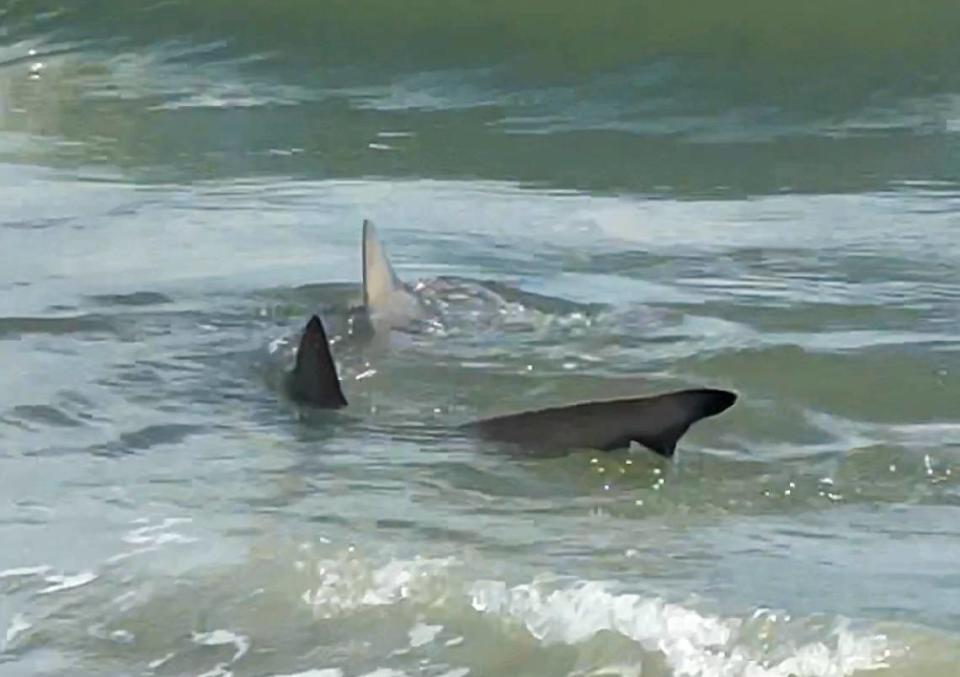Are shark attacks on the rise? Here’s what to know & how to stay safe in SC waters
If you’ve ever frequented a beach along coastal South Carolina, you’ve probably been near a shark and might not have even known it.

Although this may alarm some, typically this is not a cause for concern.
Shark sightings have been up somewhat this summer throughout the Southeastern United States. This has been widely speculated to be caused from an array of influences such as an influx in conservation efforts, heat and /or schools of bait fish being more present near the shores.
The presence of sharks in the area, big or small, should come as no surprise as this is their natural habitat; yet, individuals still fear having any proximity to these toothy fish.
Luckily, sharks don’t have much of an interest in us and the data shows this.
According to the Florida History Museum, a state natural history museum, the odds of being attacked by a shark are 1 in 11.5 million.
There were 69 unprovoked shark bites on humans last year, 36 of which were in the U.S., according to the International Shark Attack File report of the museum. Of those 69 attacks, two were fatal — one in California and the other in Hawaii. There was a 12.2% drop in reported shark bites in 2023 compared to 2022.
South Carolina had two reported shark bites in 2023. The Palmetto State has had a total of 118 shark attacks since 1837 — ranking it fourth highest for total shark bites among the states, the International Shark File states.

What to avoid to keep from attracting a shark
Although a bite from a nearby shark is generally a random occurrence, it’s better to err more on the side of caution.
There are recommended things someone can do to avoid attracting a shark and keep it from investigating a little closer. These include:
Avoid wearing shiny clothing and objects that might appear like a fish flashing in the water.
Avoid swimming in and around schools of bait where sharks may be feeding or come to feed. A good indicator is if shorebirds are diving into the water nearby.
When swimming in the surf or offshore, people should stay in groups and not swim alone. Sharks are more likely to approach an unaccompanied individual.
Avoid swimming near someone who is fishing from or near the beach.
Don’t swim too far from shore.
Avoid splashing around in the water.
Don’t swim at dusk or dawn.
Sound, color and blood were listed as primary alluring components for sharks by the National Oceanic and Atmospheric Administration (NOAA). Yellow, white, and silver colors were recorded to seemingly attract sharks as opposed to dull colors.

Which sharks are the most dangerous?
The most dangerous species in order of documented attack records, according to NOAA, are:
Great white shark.
Bull shark
Tiger shark.
Grey nurse shark.
Lemon shark.
Blue shark.
Sand tiger shark.
Several species of hammerhead sharks.
Mako shark.

Can we help protect them?
If you’re looking to get involved with helping promote shark advocacy or prioritizing conservation efforts, Frazier recommended two global groups that may be of interest to you.
Shark Advocates International works to protect sharks from unsustainable trade and is a nonprofit project of The Ocean Foundation that works to conserve sharks worldwide. The group works to provide leadership in advancing sound, science-based local, national, and international conservation policies, according to the nonprofit’s website.
Save Our Seas Foundation has been dedicated to protecting life in oceans worldwide, especially that of sharks and rays, since 2003. In the effort to protect our oceans, the foundation funds and supports research, conservation and education projects worldwide, reported the Save Our Seas website.


